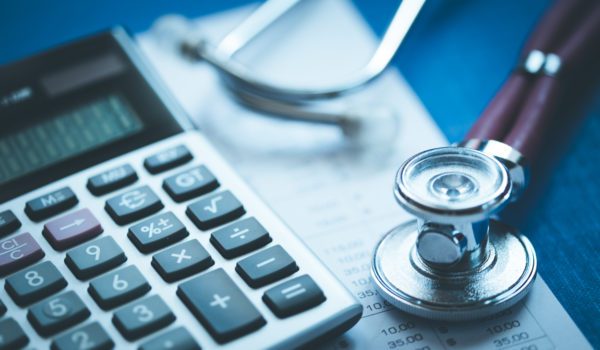Providers, hospitals, laboratories, ambulatory surgery centers, imaging centers, rural health centers, federally qualified health centers, and air ambulance providers – do not let the No Surprises Act (the “Act”) surprise you! The Act applies to you and requires you to make some modifications to your operations to ensure compliance with the Act’s surprise billing rules by January 1, 2022.
Surprise billing occurs when a patient receives an unexpected medical bill for services the patient received from a health care provider that is not covered by the patient’s health insurance. This commonly occurs when a patient seeks treatment from a health care facility that may be covered by the patient’s health insurance; however, while at the facility, the patient ends up being treated by a provider at the facility who is not covered by the patient’s health insurance (unbeknownst to the patient). Typically, this occurs because the provider is an independent contractor of the facility who is not credentialed by the same insurers as the facility itself. To reduce the occurrence of this surprise billing and to protect patients from its ensuing financial hardship, Congress enacted the No Surprises Act (the Act) on December 27, 2020 as part of the Consolidated Appropriations Act of 2021.
In addition to strengthening safeguards against surprise billing for those who have health insurance, the Act was intended to provide better protection to uninsured and self-pay patients, who are more likely to be impacted by an unexpected medical bill. To that end, Section 2799B-6(2) (Section 112 of the Act) was added to Public Health Services Act, which requires health care providers and health care facilities, upon scheduling an item or service or upon request of an individual, to inquire about such individual’s health coverage status and to provide a notification of the good faith estimate of the expected charges for furnishing such item or service.
In response to the Act’s passage, the U.S. Department of Health and Human Services (HHS), along with several other federal agencies, published two sets of implementing regulations to carry out the requirements thereof. In our prior blog posts, we discussed the first interim final rule and the FAQ Guidance for No Surprises Act published by HHS. This article focuses on the second interim final rule with comment period, titled “Requirements Related to Surprise Billing: Part II,” (the “Rule”), which was published on September 30, 2021. Among other goals, it is designed to enforce the requirements of the Act with respect to the provision of good faith estimates to uninsured and self-pay patients and the establishment of a patient/provider dispute resolution process for billing disputes. Specifically, 45 CFR 149.610 addresses in detail the requirements in connection with the provision of a good faith estimate.
As with all regulatory compliance analyses, it is of utmost importance to establish the applicability of a new rule. According to 45 CFR 149.610, the rule applies to health care facilities and health care providers.
“Health care facility” means an institution in any state in which state or applicable local law provides for the licensing of such an institution, that is licensed as such an institution pursuant to such law or is approved by the agency of such state or locality responsible for licensing such institution as meeting the standards established for such licensing. More specifically, the following facilities are all covered by the requirements set forth in the Act: hospital or hospital outpatient department, critical access hospital, ambulatory surgical center, rural health center, federally qualified health center, laboratory, or imaging center.
“Health care provider” means a physician or other health care provider who is acting within the scope of practice of that provider’s license or certification under applicable state law, including a provider of air ambulance services.
Among other obligations, heath care facilities and health care providers must do the following within one to three business days depending on when an uninsured (or self-pay) patient schedules a service with them:
- Determine if the patient is uninsured by inquiring if the patient has health insurance coverage;
- Inquire whether the patient who has insurance coverage is seeking to have a claim submitted for the primary item or service; and
- Inform all uninsured (or self-pay) patients of the availability of a good faith estimate of expected charges upon scheduling or upon request.
Moreover, the Rule requires that a good faith estimate include:
- The patient’s name and date of birth;
- A description of the primary item or service in clear and understandable language and the appointment date such item or service is to be provided;
- An itemized list of items or services, grouped by each provider, reasonably expected to be furnished, and items or services reasonably expected to be furnished in conjunction with the primary item or service, for that period of care;
- The applicable diagnosis codes, expected service codes, and expected charges associated with each listed item or service;
- The name, National Provider Identifier, and Tax Identification Number of each provider represented in the good faith estimate, and the state(s) and office or facility location(s) where the items or services are expected to be furnished by such provider or facility; and
- A number of disclaimers with specified content.
Again, all requirements listed above will come into effect on January 1, 2022. If your facility sees uninsured or self-pay patients regularly and is of a type covered by the Act, you should take actions immediately to comply with the foregoing requirements. Due to the complexity of the Rule, it might be challenging to ascertain whether the Rule applies to your entity and come up with an appropriate set of compliance measures.
Our team has also developed a compliance checklist to help you address the Rule’s requirements for compliance purposes. If your entity needs help interpreting the Rule, please contact one of the authors of this article.

